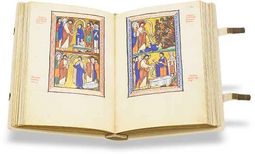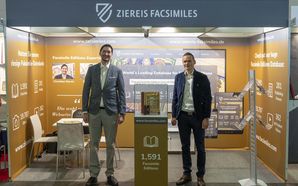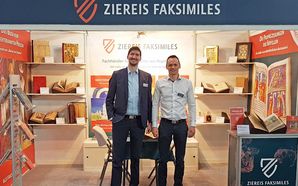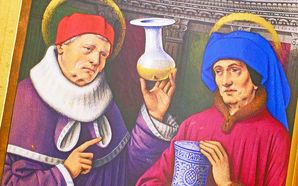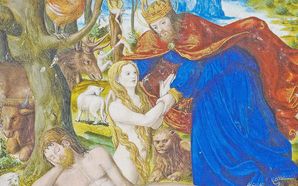Invited to Speak at Europe's Largest Medieval Conference: Join Us at the 2019 International Medieval Congress in Leeds
Here is a short report and our impressions of this year's largest specialist conference for medievalists in Europe at the University of Leeds, where we were invited to give a lecture themed "The Manufacture of a Medieval Manuscript Facsimile".
IMC LEEDS: MORE THAN 3,000 MEDIEVALISTS FROM AROUND THE WORLD
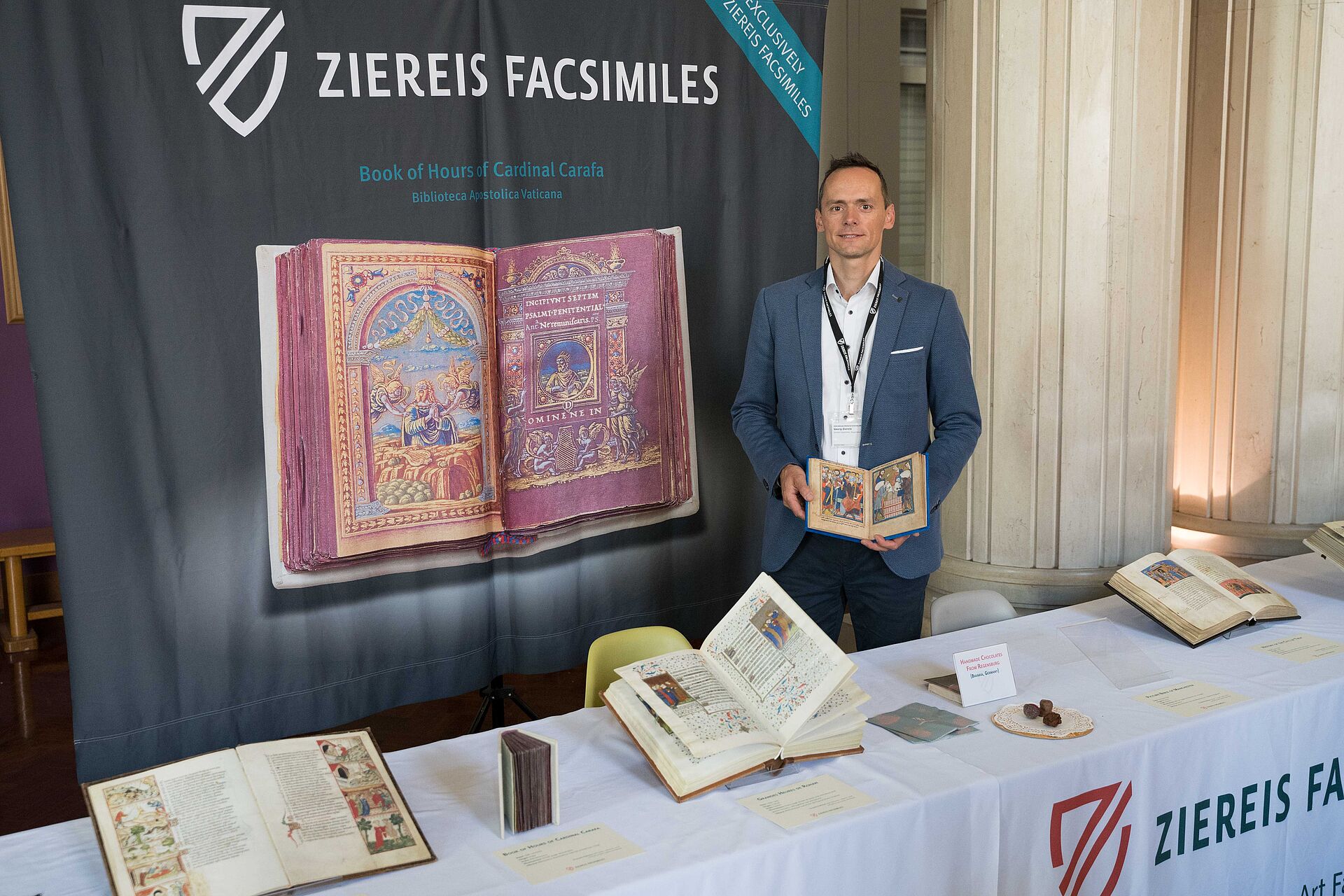
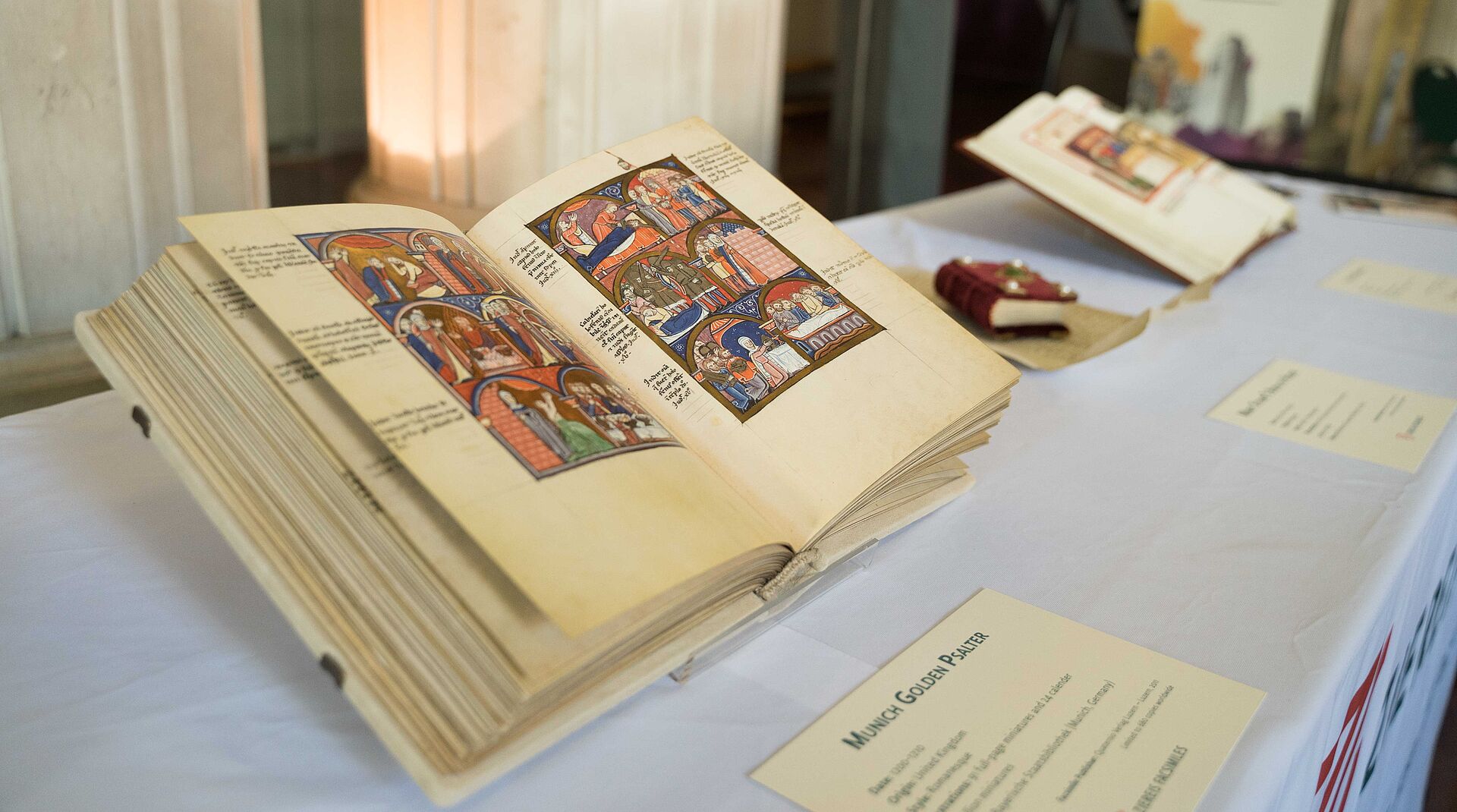

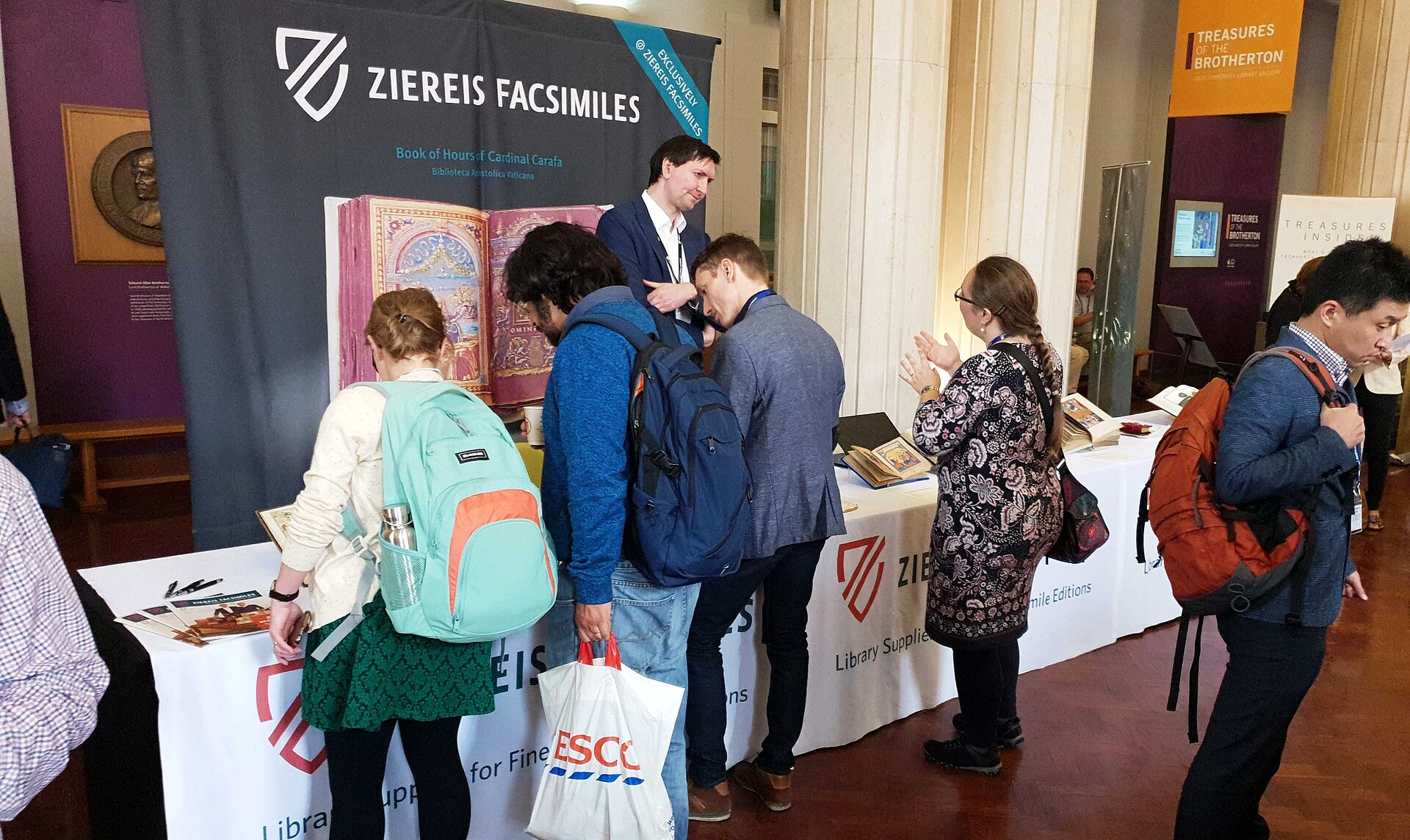
Every year, more than 3,000 scholars from all over the world meet to exchange ideas in round table discussions with colleagues from all fields of medieval science at the International Medieval Congress in Leeds . The central component of the largest medieval congress in Europe is, however, hundreds of lectures, so-called sessions, in which the scientists present their latest findings and report on their research over four packed days.
A GREAT HONOR: AN INVITATION TO THE LECTURE
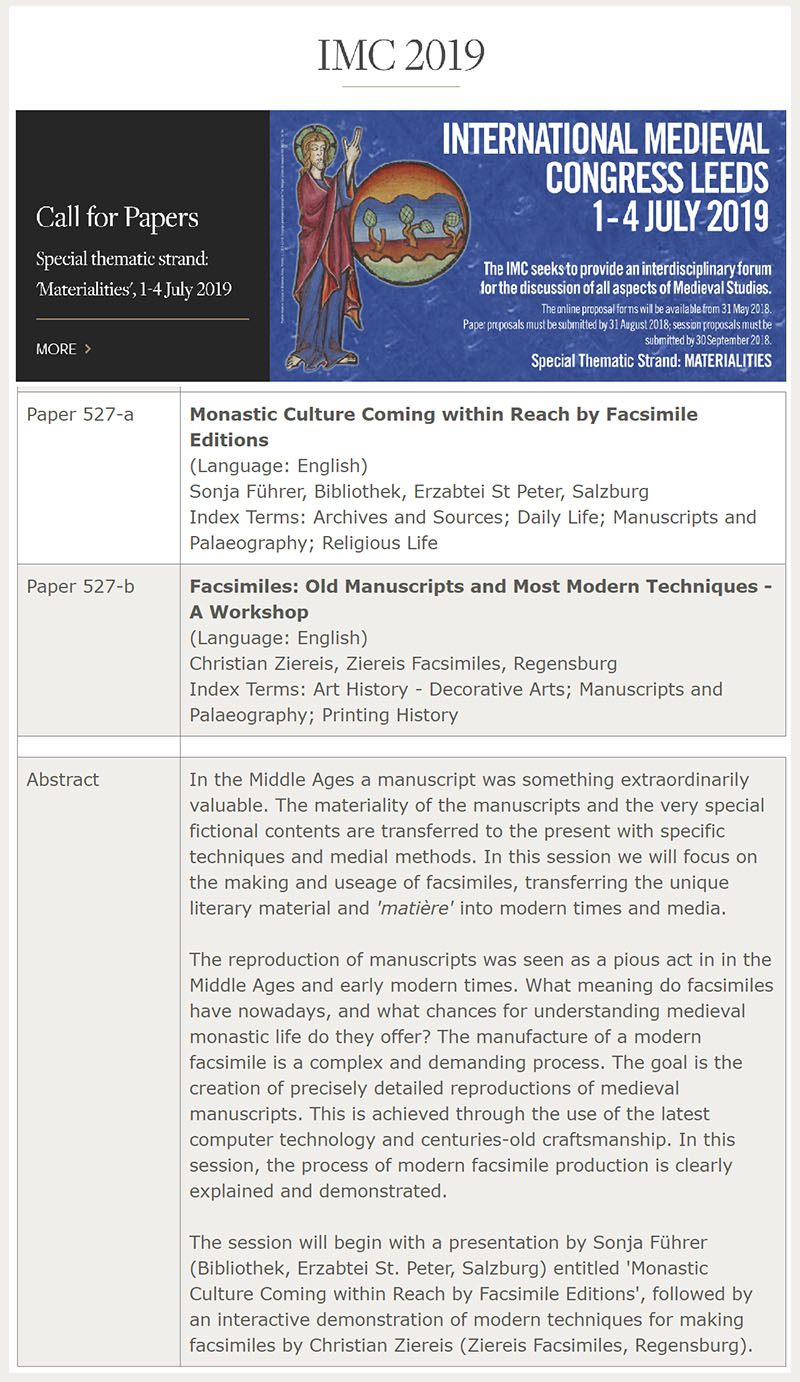
Last year, Dr. Siegrid Schmidt from the University of Salzburg invited us to organize a workshop on facsimiles. Mag. Sonja Führer, director of the monastic library of St. Peter's Abbey, gave her insights into the use of facsimiles in the academic world before I myself spoke about the lengthy manufacturing process. Here is the corresponding abstract for our session.
OUR LECTURE: "THE MANUFACTURE OF A MEDIEVAL MANUSCRIPT FACSIMILE"

In my 45-minute lecture "The Manufacture of a Medieval Manuscript Facsimile" I dealt with the many challenges that have to be faced in producing the facsimile of a medieval manuscript: the selection and access to the original manuscript, digitization and paper selection, the processes preparing of the print data and the actual printing itself, the gilding and trimming, and finally the labor of bookbinding.
ALSO FOR TOUCHING: GREAT INTEREST AND WONDERFUL RESONANCE


In addition to my PowerPoint presentation and, of course, the spoken word above all, the show pieces, tools, and materials I brought with me were particularly exciting for the 30 participants. The lecture took place on the morning of the second day. If only a few more of the many scholars who were otherwise occupied or only learned about our lecture later (and for whom we had to repeat the content at our booth afterwards) had come, the room with 50 seats would not have been sufficient. The interest was enormous! And the response, which can often be seen from the number of requests to speak and face-to-face discussions following a lecture, was extremely positive through and through.
PROF. HENRIKE LÄHNEMANN (UNIVERSITY OF OXFORD): A FACSIMILE IN 10 MINUTES ...
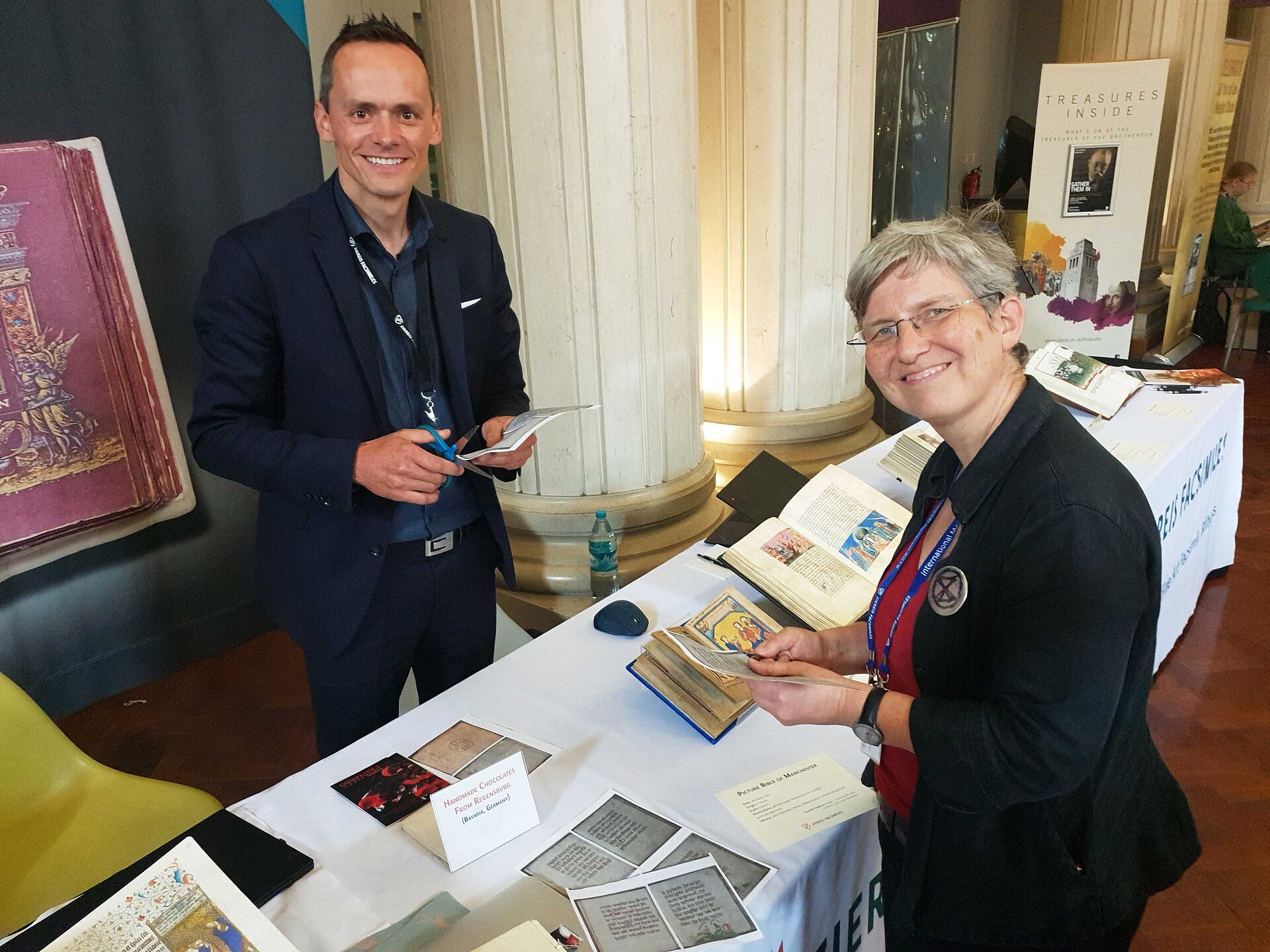
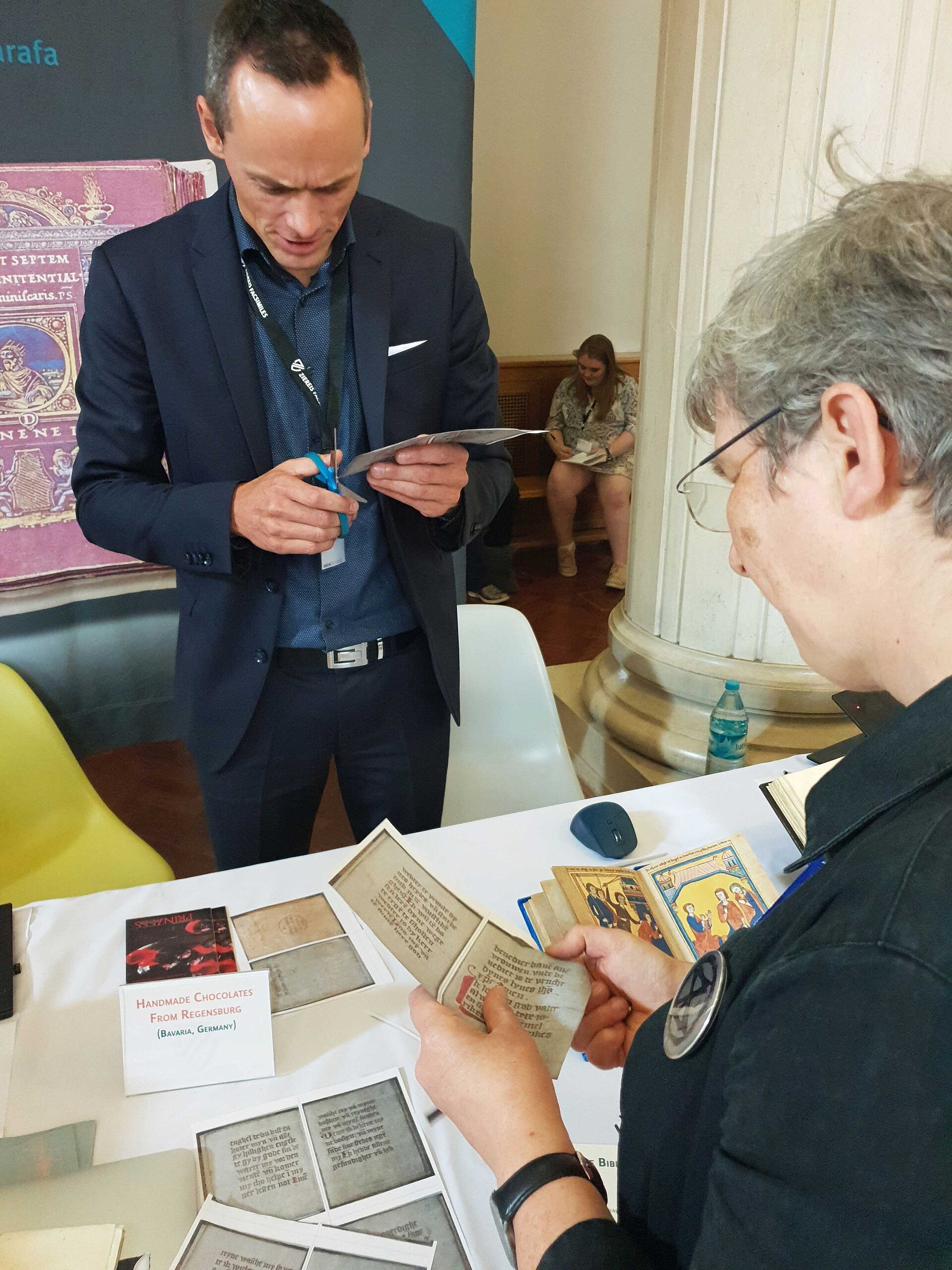
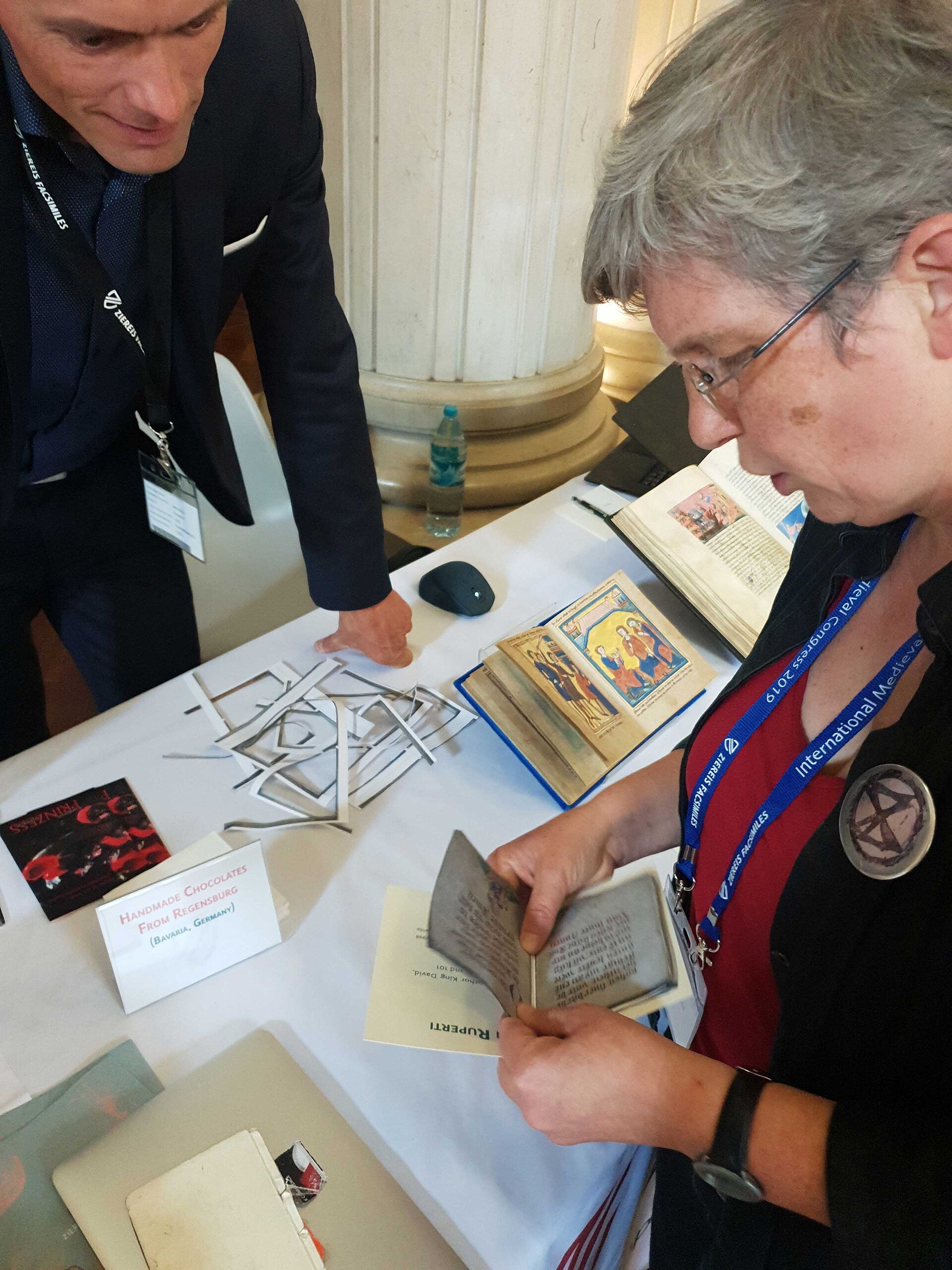
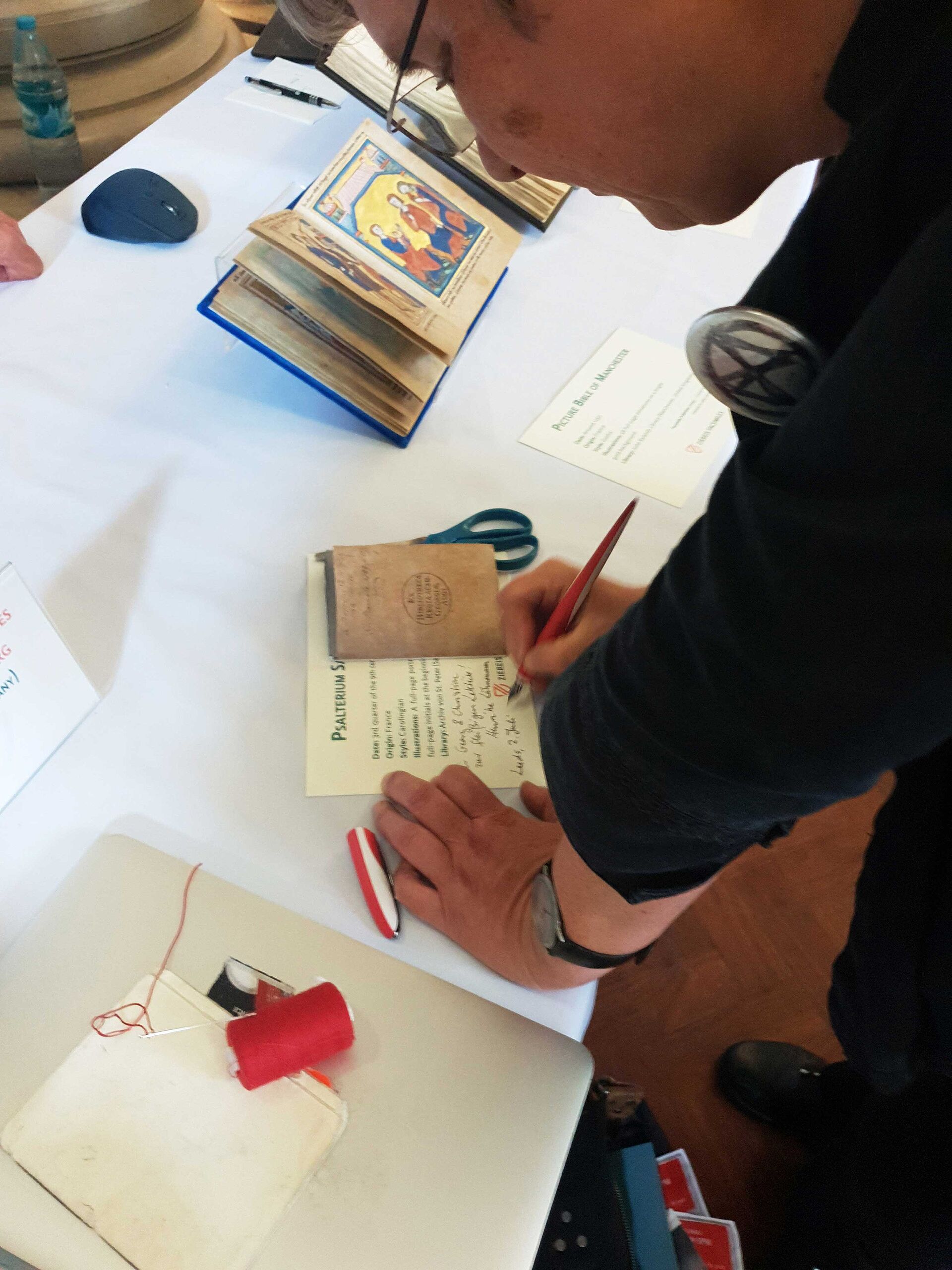
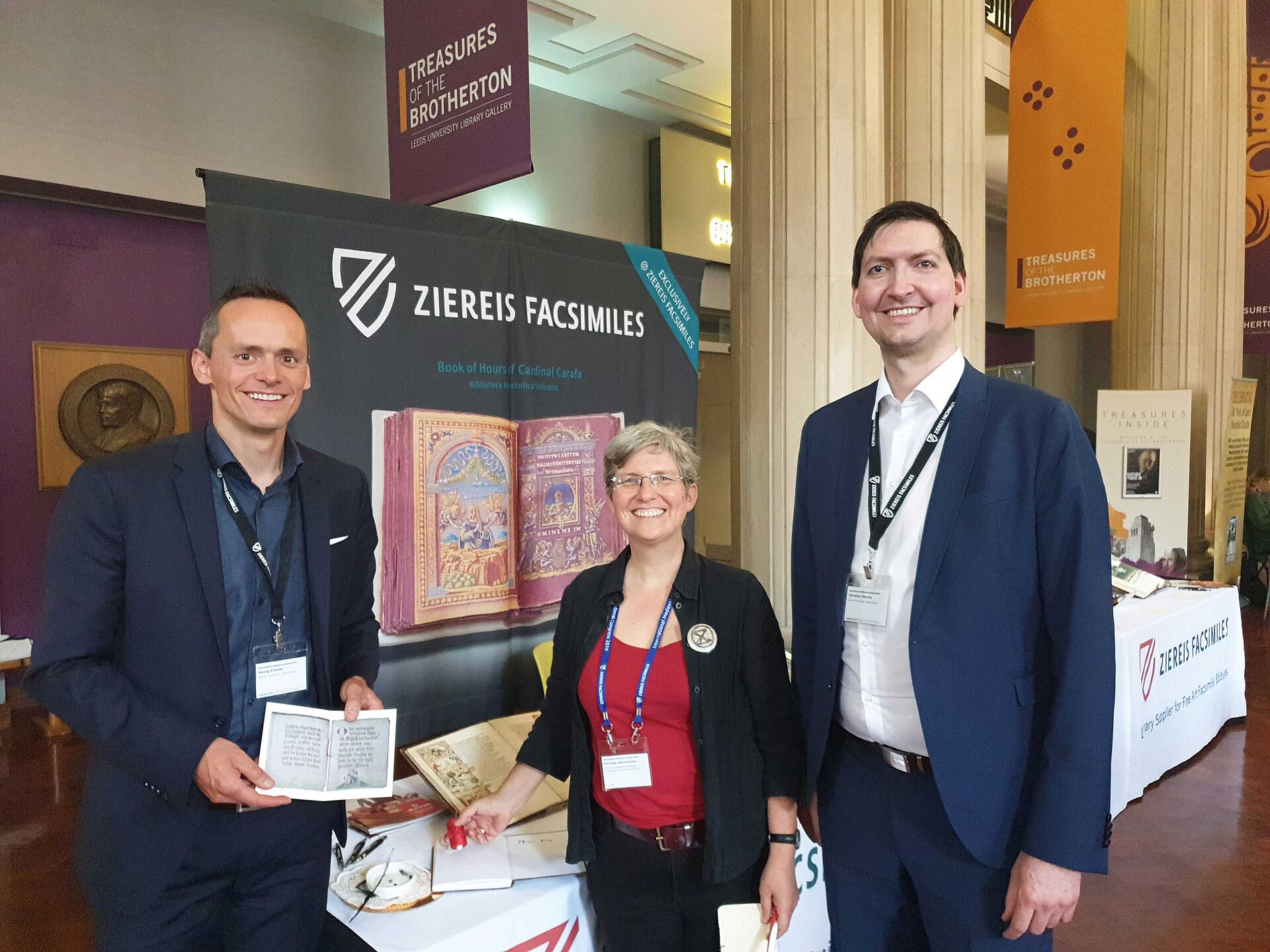
Professor Henrike Lähnemann, who is i.a. Chair of Medieval German Literature and Linguistics at the University of Oxford, one of the oldest and most prestigious universities in the world, provided a highlight of the unexpected kind: not only were we able to quickly prepare a bird feather for writing (since Professor Lähnemann always has her pocket knife for such purposes), we also created our own “facsimile” within 10 minutes! Thank you for this unexpected lesson!
PROF. AXEL E.W. MÜLLER AND MANY OTHERS: ALWAYS TIME FOR TALK

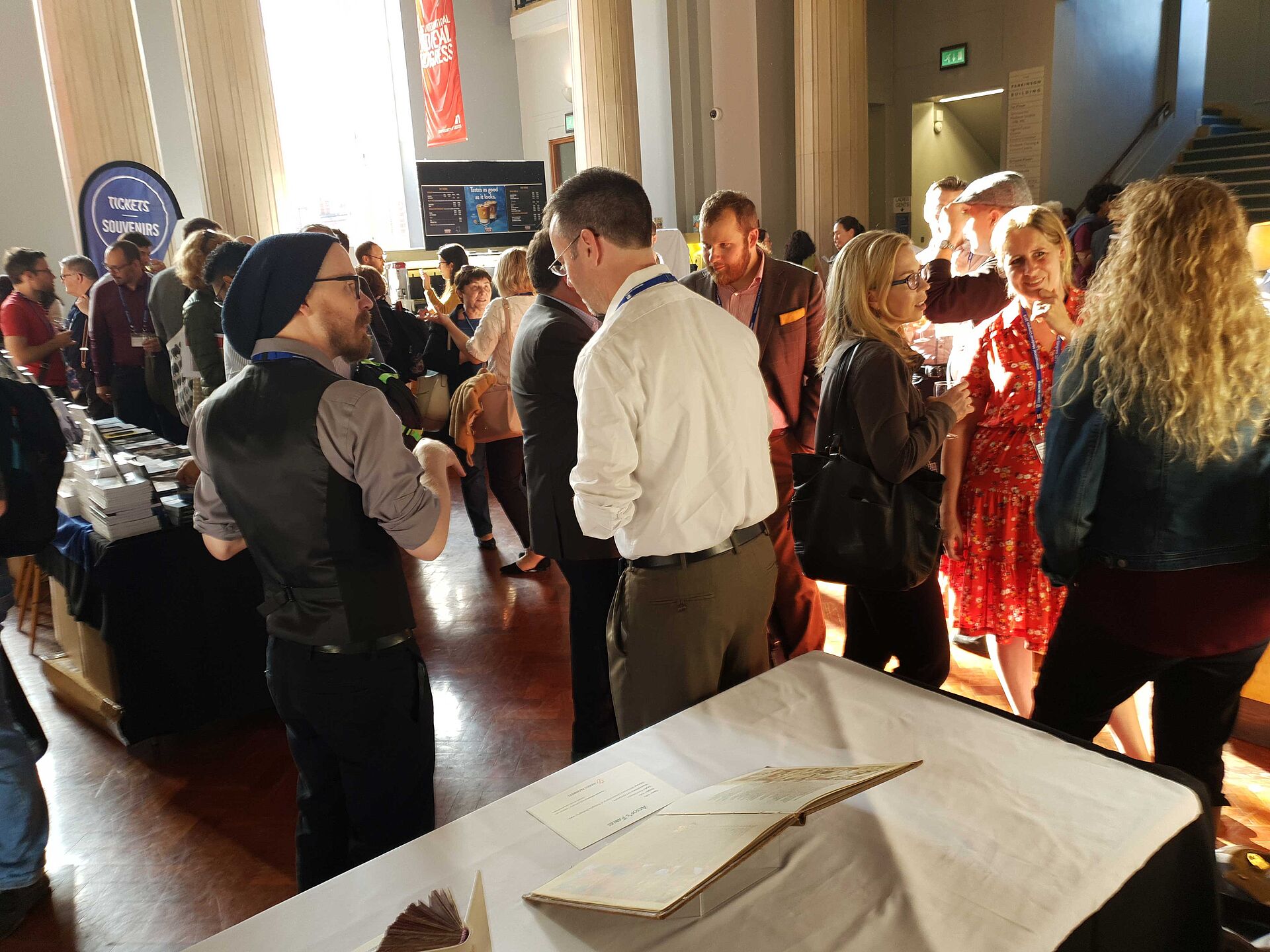
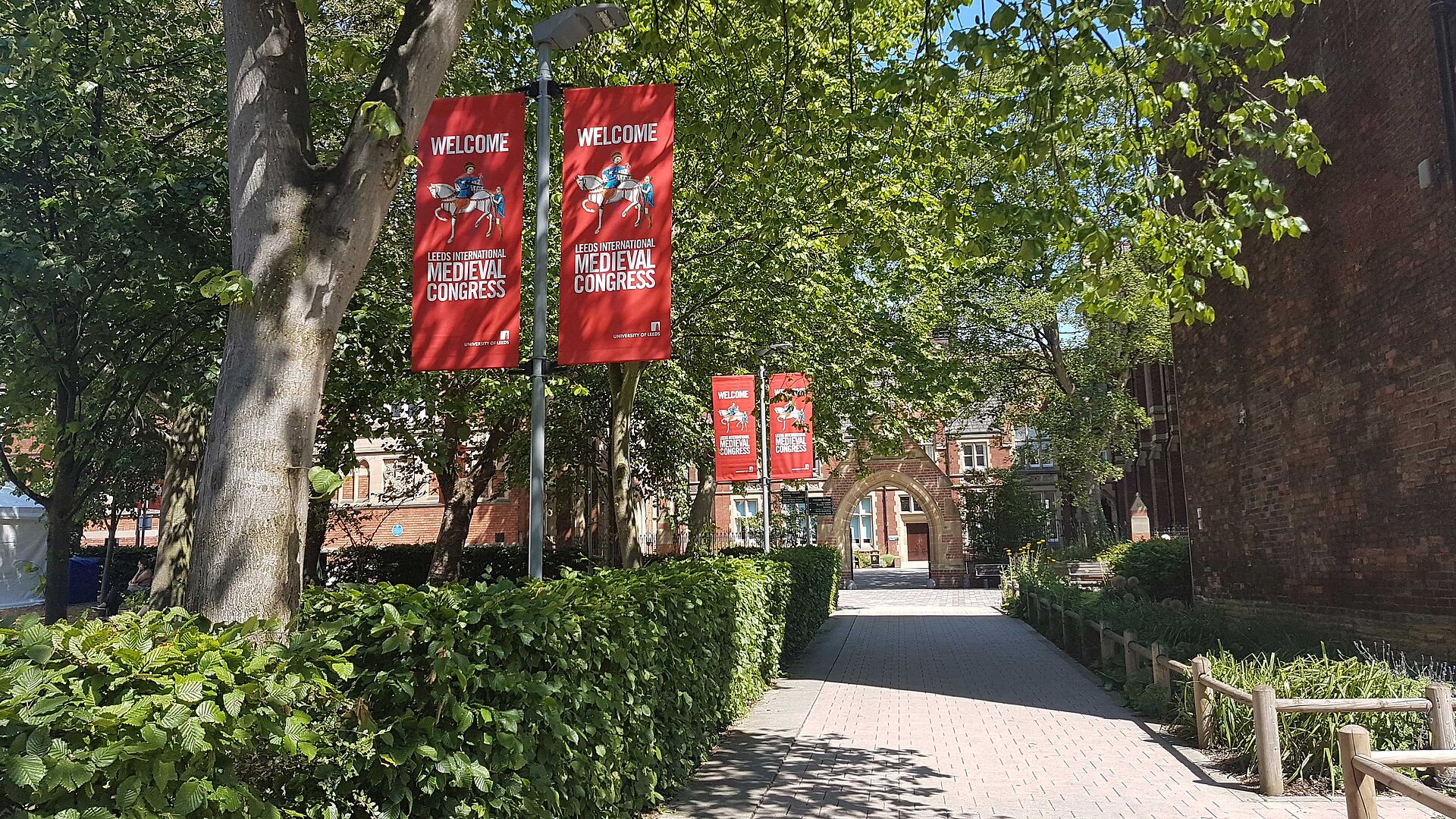
Of course, Professor Lähnemann was not the only interesting person to meet and get to know in 4 days of the congress. The mixture of luminaries in their field and up-and-coming young scholars from England, Germany, Europe and around the world - that's what the International Medieval Congress in Leeds is to us. We were also particularly pleased that the Congress Director, Professor Axel EW Müller (above), despite his numerous obligations, found the time to talk to us in detail concerning the congress and its extremely committed and helpful staff, the Middle Ages (his areas of expertise are firearms and the reception of the Middle Ages today) and of course, Brexit.

